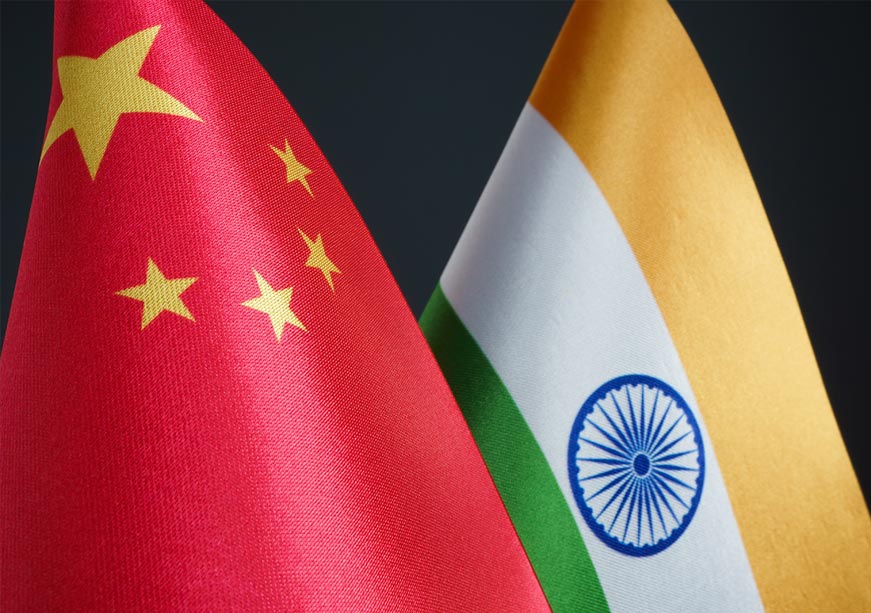-
CENTRES
Progammes & Centres
Location
The current Chinese discourse on India provides important context to the escalating security situation in South Asia

Image Source: Getty
From the United States (US) Vice President JD Vance’s high-profile India visit, the terrorist attack in Pahalgam, to the gathering of war clouds over South Asia, the past week has seen a major churn in South Asian geopolitics, the contours of which are still not clear. What is the link between Vance’s visit and the attack in Kashmir? Why would Pakistan risk such a major escalation, given its diminishing global profile and the various domestic challenges it faces? Such questions are doing the rounds in strategic circles in India and beyond, with no obvious answers in sight. However, a closer look at the discourse in Beijing provides important clues and helps construe some plausible context for the current turn in developments.
President Xi Jinping’s team is attempting to sabotage and/or prevent any such deal from materialising, forcing the Americans to negotiate with China on Chinese terms.
It is no surprise that China has been particularly concerned about Vance’s India visit, which the Chinese strategic community has framed as “a sinister move” by the Trump administration to isolate China and harm its interests. Some Chinese scholars have described the diplomatic visit as an “ace card” played by the Americans at “the white-hot stage of the Sino-US trade war.” According to this view, on the one hand, the White House is attempting to negotiate as many bespoke trade deals with countries as possible within its own 90-day deadline, thereby tipping the balance of the trade war in its favour. On the other hand, President Xi Jinping’s team is attempting to sabotage and/or prevent any such deal from materialising, forcing the Americans to negotiate with China on Chinese terms.
So each time the US Treasury Secretary Scott Bessent celebrates the US signing one of the first trade deals with India, it is met with concern in Beijing. Questions are being raised as to why India is “rushing to strike a trade deal with the United States,” when “most American allies are still deliberating on the issue.” It is argued that the United States’ staunchest allies, including Britain and Japan, have displayed “a cautious attitude. The European Union is viewed as conducting “friendly consultations” with Beijing on the issue of EU tariffs on Chinese Electric Vehicles (EVs) in a manoeuvre designed to delink itself from Washington. But India, they argue, is a clear outlier.
China is worried that India will reduce tariffs imposed on imports from the United States in exchange for technology, energy and security cooperation, and may even agree to purchase certain American agricultural products, complicating Beijing’s trade war strategy vis-à-vis the US.
The Chinese side was furious that New Delhi announced a 12 percent tariff on imported steel, coinciding with Vance’s visit. The tariff is meant to protect India’s domestic steel industry from a flood of cheap Chinese imports, which Beijing interpreted as New Delhi siding with the Trump administration in its trade war. Terming the move “the first major Indian trade policy shift” since the trade war began, these scholars worry that the Indian strategy will “set a wrong precedent” for other countries. Similarly, the news of Air India planning to purchase Boeing aircraft originally intended for Chinese clients has caused significant heartburn in Beijing. China is worried that India will reduce tariffs imposed on imports from the United States in exchange for technology, energy and security cooperation, and may even agree to purchase certain American agricultural products, complicating Beijing’s trade war strategy vis-à-vis the US. For example, China has imposed heavy tariffs on US agricultural products like soybeans, replacing them with Brazilian imports, causing losses to the US agricultural products industry. Now, Beijing worries, if India starts buying American soybeans and other agricultural products, it will ease the US's predicament and negatively impact the Chinese strategy.
Chinese observers fumed that despite Beijing’s stern warning about “bargaining with a tiger for its skin” and the Chinese ambassador’s reassurances, India reached an agreement on the reference framework for the first phase of bilateral trade negotiations and expressed hope about reaching a “win-win” agreement with the US within the next 90 days. This, the Chinese side argues, can influence a vast number of developing countries that are currently framing a response to the US “reciprocal tariffs”. “Every other country,” Chinese observers note, has criticised President Trump's tariff/trade policy, but only India sees it as an opportunity”. Chinese scholars like Liu Zongyi, Director and Researcher at Shanghai Institutes for International Studies (SIIS), frowned on Commerce and Industry Minister Piyush Goyal’s comment that a US-China trade war is “conducive to supply chain fairness” and in India’s interests.
The consensus in Beijing is that the first bird to stick its head out must be shot (枪打出头鸟). Since India has taken the lead in cooperating with the Trump administration and “selling out Chinese interests,” India, they argue, needs to be “taught a difficult lesson”. Stringent export control crippling India’s manufacturing industry and mobilising countries in South Asia, including Pakistan, against New Delhi are some of the plausible countermeasures that seem to enjoy broad public support in China[1].
PM Modi’s “purple carpet welcome” in Saudi Arabia and, before that, a large Israeli business delegation’s visit in mid-February also didn’t go unnoticed in Beijing.
The other issue that figured prominently in the Chinese discourse was ‘the Middle-East factor. Many Chinese observers viewed Vance’s India visit against the backdrop of the inaugural joint military drill between China and Egypt. PM Modi’s “purple carpet welcome” in Saudi Arabia and, before that, a large Israeli business delegation’s visit in mid-February also didn’t go unnoticed in Beijing. In the Chinese assessment, the main purpose of Vance's visit was to consolidate the layout of the "US-Europe-Israel-India" economic corridor (formally the India–Middle East–Europe Economic Corridor or IMEC), to limit the expansion of China's own Belt and Road Initiative (BRI) and control key maritime choke points, including the Suez Canal, the Bab el-Mandeb Strait, and the Strait of Hormuz.
They argued that the United States' crackdown on the Houthis in Yemen, its pressuring of Iran to reach a new nuclear deal, its support for Israel in the war in Gaza and its cooperation with India are all paving the way to achieve this strategic goal. At a time when Russia is caught up with the war in Ukraine and has, for practical purposes, lost its only “bridgehead” in the Middle East (Syria-Lebanon), it is only a matter of time, Chinese observers argue, before the United States again dominates affairs in the Middle East, lest China intervenes. Chinese scholars like Lou Chunhao, Senior Researcher at the China Institutes of Contemporary International Relations (CICIR), point to Beijing’s shared interest with countries that have been “bypassed” in this project, like including Türkiye, Egypt, and Iran, in jeopardising the progress of the IMEC.
At a time when Russia is caught up with the war in Ukraine and has, for practical purposes, lost its only “bridgehead” in the Middle East (Syria-Lebanon), it is only a matter of time, Chinese observers argue, before the United States again dominates affairs in the Middle East, lest China intervenes.
The discourse in Beijing should lead to a serious Indian appraisal along multiple vectors. First, given the striking similarity between the Pahalgam terrorist attack and the October 7 Hamas attack in Israel, India needs to investigate deeper if the development is part of a relatively simpler plot of India-Pakistan rivalry over Kashmir, or part of a bigger and more complex script of intensifying great power competition. Second, given China’s focus on issues about trade and tariffs, New Delhi should also be reexamining its economic outreach to the world and reassessing how it can conduct economic diplomacy more effectively in tackling the challenges presented by a joint Chinese and Pakistani front.
Antara Ghosal Singh is a Fellow with the Strategic Studies Programme at the Observer Research Foundation.
[1] However, it is important to note that despite Chinese state’s strong official support for Pakistan, public opinion in China seem to have very little sympathy for Pakistan-based terrorism, which has lately started targeting Chinese citizens as well. Some even quietly appreciate India’s counter terror actions against Pakistan.
The views expressed above belong to the author(s). ORF research and analyses now available on Telegram! Click here to access our curated content — blogs, longforms and interviews.

Antara Ghosal Singh is a Fellow at the Strategic Studies Programme at Observer Research Foundation, New Delhi. Her area of research includes China-India relations, China-India-US ...
Read More +